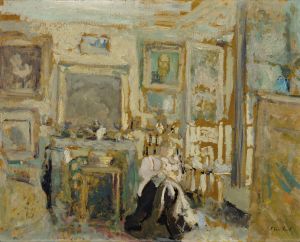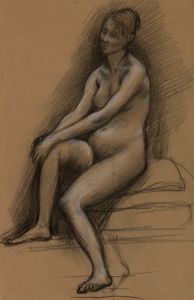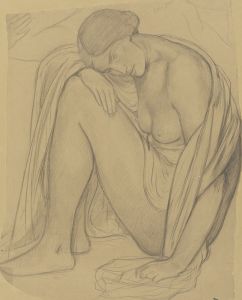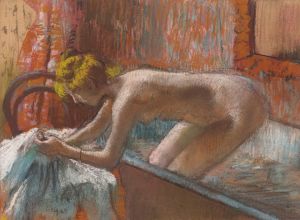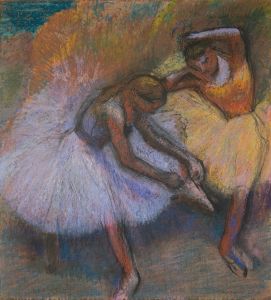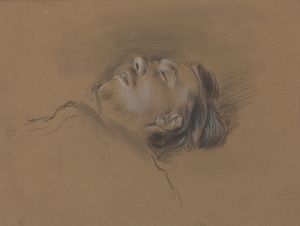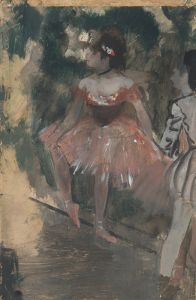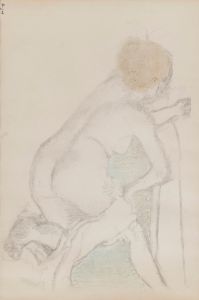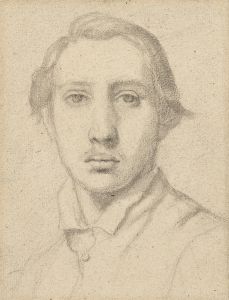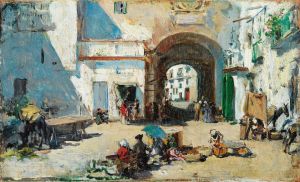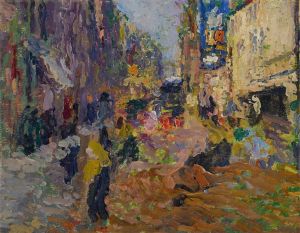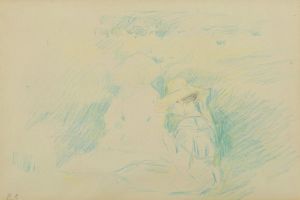
Two Seated Women
A hand-painted replica of Edgar Degas’s masterpiece Two Seated Women, meticulously crafted by professional artists to capture the true essence of the original. Each piece is created with museum-quality canvas and rare mineral pigments, carefully painted by experienced artists with delicate brushstrokes and rich, layered colors to perfectly recreate the texture of the original artwork. Unlike machine-printed reproductions, this hand-painted version brings the painting to life, infused with the artist’s emotions and skill in every stroke. Whether for personal collection or home decoration, it instantly elevates the artistic atmosphere of any space.
Edgar Degas, a prominent French artist associated with the Impressionist movement, is renowned for his innovative approach to painting, sculpture, and drawing. One of his works, "Two Seated Women," exemplifies his keen interest in capturing the nuances of human form and the subtleties of everyday life. Although not as widely discussed as some of his other masterpieces, this painting reflects Degas's distinctive style and thematic focus.
"Two Seated Women" is a pastel drawing, a medium Degas favored for its ability to convey texture and movement. Pastels allowed him to layer colors and create a sense of immediacy and intimacy in his work. Degas often depicted women in various settings, capturing them in candid, unguarded moments. This particular piece features two women seated together, engaged in a moment of quiet reflection or conversation. The composition is intimate, drawing the viewer into the personal space of the subjects.
Degas's interest in the human figure is evident in the way he portrays the women. His attention to detail and anatomy is meticulous, yet he imbues the figures with a sense of fluidity and grace. The use of light and shadow in the drawing highlights the contours of the women's bodies, emphasizing their presence within the space. Degas's technique often involved the use of bold, expressive lines and a vibrant color palette, which can be seen in the way he renders the clothing and background elements.
The setting of "Two Seated Women" is typical of Degas's work, which frequently depicted interior scenes. He had a fascination with capturing the private, often unseen moments of women's lives, whether in domestic settings, at the ballet, or in the world of work. This focus on the everyday and the ordinary was a hallmark of Degas's approach, setting him apart from many of his contemporaries who often chose more grandiose or traditional subjects.
Degas's work is characterized by a sense of immediacy and spontaneity, likely influenced by his interest in photography and Japanese prints, which were popular in Europe during his lifetime. These influences can be seen in the composition and framing of "Two Seated Women," where the figures are captured in a moment that feels both fleeting and timeless.
Throughout his career, Degas maintained a complex relationship with the Impressionist movement. While he shared their interest in modern life and innovative techniques, he often distanced himself from the label, preferring to be known as a realist. His work, including "Two Seated Women," reflects this duality, combining a keen observational eye with a commitment to exploring the emotional and psychological depth of his subjects.
In summary, "Two Seated Women" by Edgar Degas is a testament to the artist's skill in capturing the essence of human experience through his innovative use of pastels and his focus on intimate, everyday moments. The drawing exemplifies Degas's unique approach to composition, light, and color, as well as his enduring interest in the lives of women. Through this work, Degas invites viewers to pause and reflect on the quiet beauty of ordinary life, a theme that resonates throughout his oeuvre.





